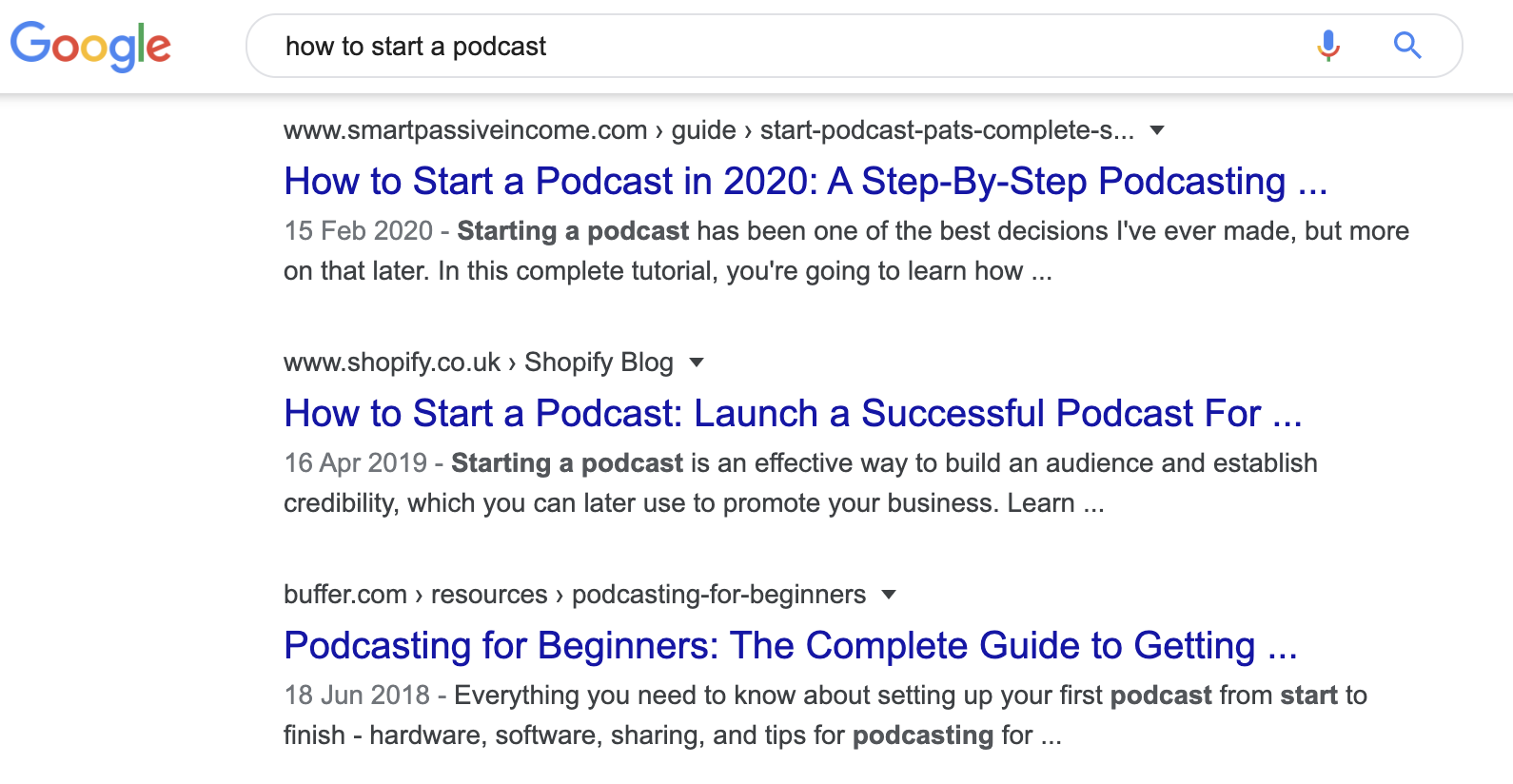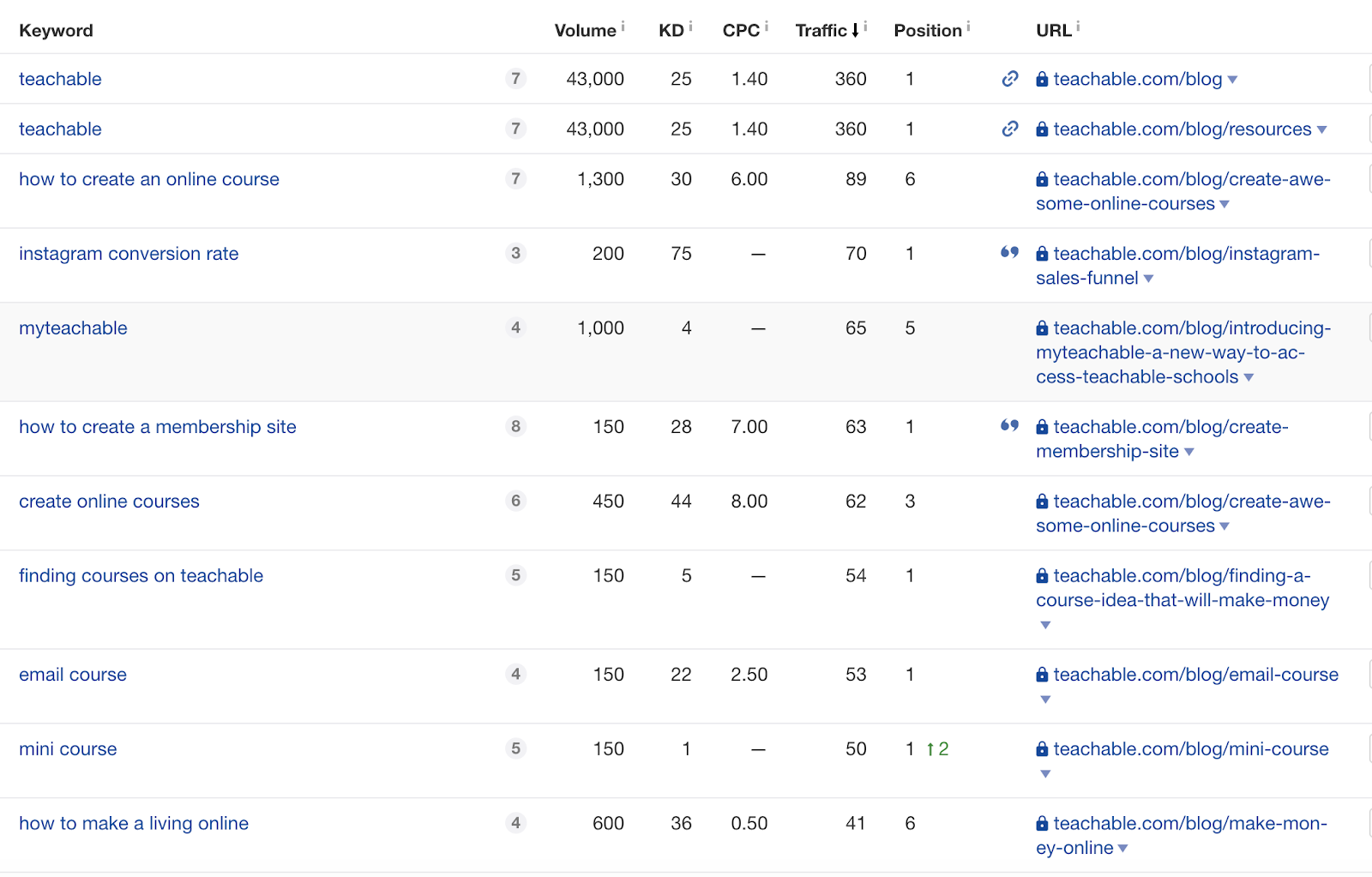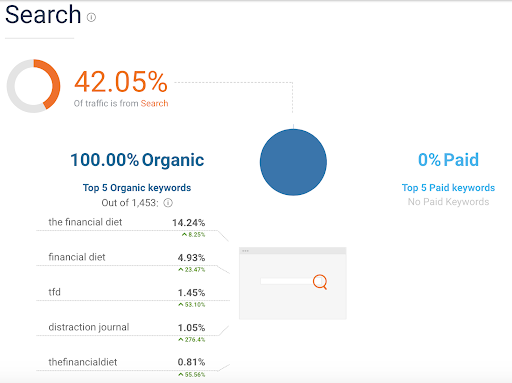
It’s all well and good to check-up on your SEO strategy and see whether it’s having an impact on your rankings, organic traffic, or conversions.
But do you know how you compare to other websites who’re fighting for your customers attention, too?
SEO competitor analysis is something that every company needs to do.
With it, you can uncover how far ahead (or behind) they are to you, and uncover some hidden bits of their strategy you can also use.
The best part? Analyzing your competitors isn’t difficult.
Here’s how to do it.
1. Make sure you’re analyzing the right competitors
Most companies assume that their main competitors are those who sell similar products.
Granted, that is a competitor you should be thinking of. But you should also take notice of the websites taking the top keyword ranking spots for your ideal keyword—be that a personal blog, forum, or company selling an entirely different product to the same audience.
For example: Smart Passive Income, Shopify, and Buffer are your SEO competitors if a main keyword for your business is podcast-related:

However, arguably the most important thing is to make sure you’re being realistic with who you’d consider as an SEO competitor.
Clixsy‘s Allen Levings explains:
“If you aren’t selling something on your site, don’t compare your site to Amazon or Walmart. Similarly, if you aren’t a directory, don’t include Thumbtack, Expertise, and other directories in your competitor analysis.”
2. Compare their SEO metrics to yours
Now we know exactly who our competitors are, we can start to compare important SEO KPIs against theirs.
You’ll want to look at:
Keyword ranking positions
Keyword ranking positions are arguably one of the most important SEO metrics. The more keywords you rank for (and in a higher position), the more SEO visibility your site has.
Take a look at the keywords your competitor websites are ranking for using tools like Moz and Ahrefs:

Scan through the keywords they’re already ranking for, and compare them to your own.
Are there any phrases they’re targeting and you’re not? Or any instances where their page ranks higher than yours for a specific keyword?
Traffic sources
Understanding where your competitors’ website traffic comes from is another great way to piece together their SEO strategy.
Head over to SimilarWeb and enter their URL to view their traffic sources:

(You’ll also be able to see their traffic breakdown by location, device, and whether they’re running paid ads.)
In the example above, we can see that 42% of traffic to this website comes from organic search.
That’s less than half, which could show that SEO isn’t their priority. By analyzing their other metrics, there’s a chance we can beat them—especially since they’re not focusing on it, themselves.
Backlink profiles
A backlink is a strong signal that proves to a search engine that a site is reputable and trustworthy. They are two things they want to know before rewarding a site with high keyword rankings.
But looking for backlink opportunities can be tiresome; guest posting only gets you so far.
That’s why you should dive into your competitors’ backlink profiles during an SEO competitive analysis using tools like Ahrefs or SEMrush:

Dig through the sites that your competitors have collected backlinks from, and how they did it. For example: Did they submit a guest post? Contribute to an article? Submit an infographic?
The more detail you have, the better.
3. Figure out how to improve their results
It’s all well and good to have a list of your competitors’ SEO metrics. But to get a leg-up on them in the SERPs, we need to understand how they’ve done something—and improve it.
Let’s say they have a backlink from a well-known site in your industry, for example. The link came in the form of a guest post they wrote. So, why not do the same thing and pitch an even better idea to the same publication?
The same concept applies to other things, like keyword rankings. If you spot they’re ranking five spots ahead of you for a keyword, put more effort into on-page SEO and try to build more internal links to that specific page on your website.
However, when doing this Alice Stevens of Best Company warns:
“Be careful with how much you let your competitor analysis inform your strategy. You want to be different and stand out from your competitors, so focus on your goals and priorities first.”
There’s no excuses for falling behind
SEO is a turbulent industry. Strategies are constantly evolving, and search engines (notably Google) change their algorithm multiple times a year.
Sure, you can wait-out these changes, and run your own SEO experiments to judge whether your idea works. But the only way to prevent falling behind is to understand what your competitors are doing—and beat them at it.
